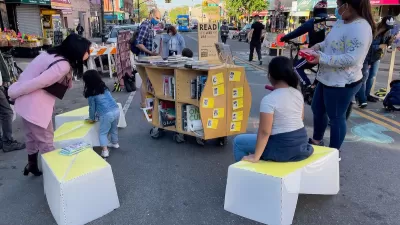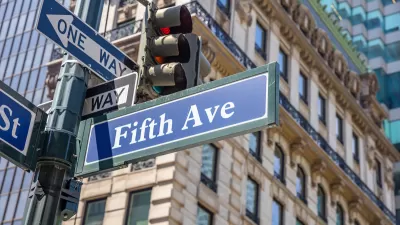There's no shortage of writing and conjecture on New York City when it comes to urban and city issues. But one subject that has been neglected in the urban academic discourse is the city's incredible concentration of beautiful women. It's amazing. It's like you can't avoid them, not that you'd want to. Walking down the street in New York City is like walking down a fashion runway. With cross traffic. And no security guards trying to tackle you.
There's no shortage of writing and conjecture on New York City when it comes to urban and city issues. But one subject that has been neglected in the urban academic discourse is the city's incredible concentration of beautiful women.
It's amazing. It's like you can't avoid them, not that you'd want to. Walking down the street in New York City is like walking down a fashion runway. With cross traffic. And no security guards trying to tackle you.
I've been to the city a number of times and while it is great and everything, there's no need to gush over it as so many have and so many will in these sorts of discussions about urban areas. But I think it's important to illuminate this aspect of the city that I've definitely noticed, which for purely academic purposes I'll call the city beauty quotient. And I'm not alone. My buddies have noticed it in their travels as well – and these guys are not planners or "urbanists" or academics or whatever we'd like to call ourselves. They are simply my bros. But they're also users of the city – the users planners and theoreticians aim to serve.
I've had conversations with these users of the city after they return from trips to New York, and they typically marvel at what I too have marveled at. I mean, these women are everywhere. I'm no creeper, and I'm not just in the city to gawk at women, but it's hard for me and my equally not-creepy friends to ignore the fact that we see an awesomely high volume of beautiful women walking around New York City.
But there's the key. When you walk around in New York City, you see beautiful girls (or guys, if that's your thing) doing exactly what you're doing: walking.
New York City, as a specific place, doesn't really have anything to do with the high city beauty quotient. It's actually a result of what kind of city it is. New York City happens to be a very walkable place, and because of this, people can walk around to serve their needs. Density, transit, jobs and other important factors play into this, but at its core, New York City is a city where people walk.
And because we're all walking in New York City, there's a greater chance that we're going to see each other. And if a girl walking happens to be gorgeous, there's a greater chance that I'll be able to see just how gorgeous she is. And what a wonderful world it will be.
So it only seems that there are more beautiful girls in New York City, but the truth is that there are just more beautiful girls seen.
Other cities probably have just as many beautiful women (proportionally), but they simply go unnoticed. In L.A., for instance, beautiful women are all over the place, but they're in cars driving 20 miles per hour on the freeway, leaving little chance of them actually crossing paths with other strangers in the public realm. Because this chance is so small, L.A.'s city beauty quotient suffers. It's the same story in any other auto-oriented place, whether in the rural Midwest or in the urban heart of the Sunbelt. There probably are a lot of beautiful women in these places, but you're not likely to cross paths with too many of them face to face. So this prompts the question: If nobody sees them, are they even there?
The answer, of course, is yes. They are there. They just need a chance to be seen to prove it. In New York City, they have that chance, and, boy, are they seen. They're seen enough to give the false impression that they're only in New York City. But they're not. They're everywhere – just not walking. But if they were and you were, well, maybe you'd run into each other.
If this isn't justification enough for creating more walkable cities, I don't know what possibly could be.

Alabama: Trump Terminates Settlements for Black Communities Harmed By Raw Sewage
Trump deemed the landmark civil rights agreement “illegal DEI and environmental justice policy.”

Study: Maui’s Plan to Convert Vacation Rentals to Long-Term Housing Could Cause Nearly $1 Billion Economic Loss
The plan would reduce visitor accommodation by 25% resulting in 1,900 jobs lost.

Why Should We Subsidize Public Transportation?
Many public transit agencies face financial stress due to rising costs, declining fare revenue, and declining subsidies. Transit advocates must provide a strong business case for increasing public transit funding.

Wind Energy on the Rise Despite Federal Policy Reversal
The Trump administration is revoking federal support for renewable energy, but demand for new projects continues unabated.

Passengers Flock to Caltrain After Electrification
The new electric trains are running faster and more reliably, leading to strong ridership growth on the Bay Area rail system.

Texas Churches Rally Behind ‘Yes in God’s Back Yard’ Legislation
Religious leaders want the state to reduce zoning regulations to streamline leasing church-owned land to housing developers.
Urban Design for Planners 1: Software Tools
This six-course series explores essential urban design concepts using open source software and equips planners with the tools they need to participate fully in the urban design process.
Planning for Universal Design
Learn the tools for implementing Universal Design in planning regulations.
Caltrans
Smith Gee Studio
Institute for Housing and Urban Development Studies (IHS)
City of Grandview
Harvard GSD Executive Education
Toledo-Lucas County Plan Commissions
Salt Lake City
NYU Wagner Graduate School of Public Service





























